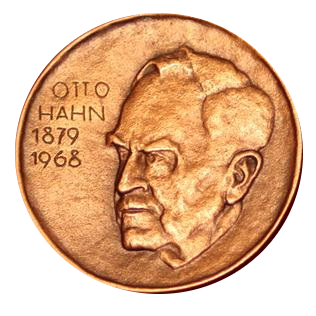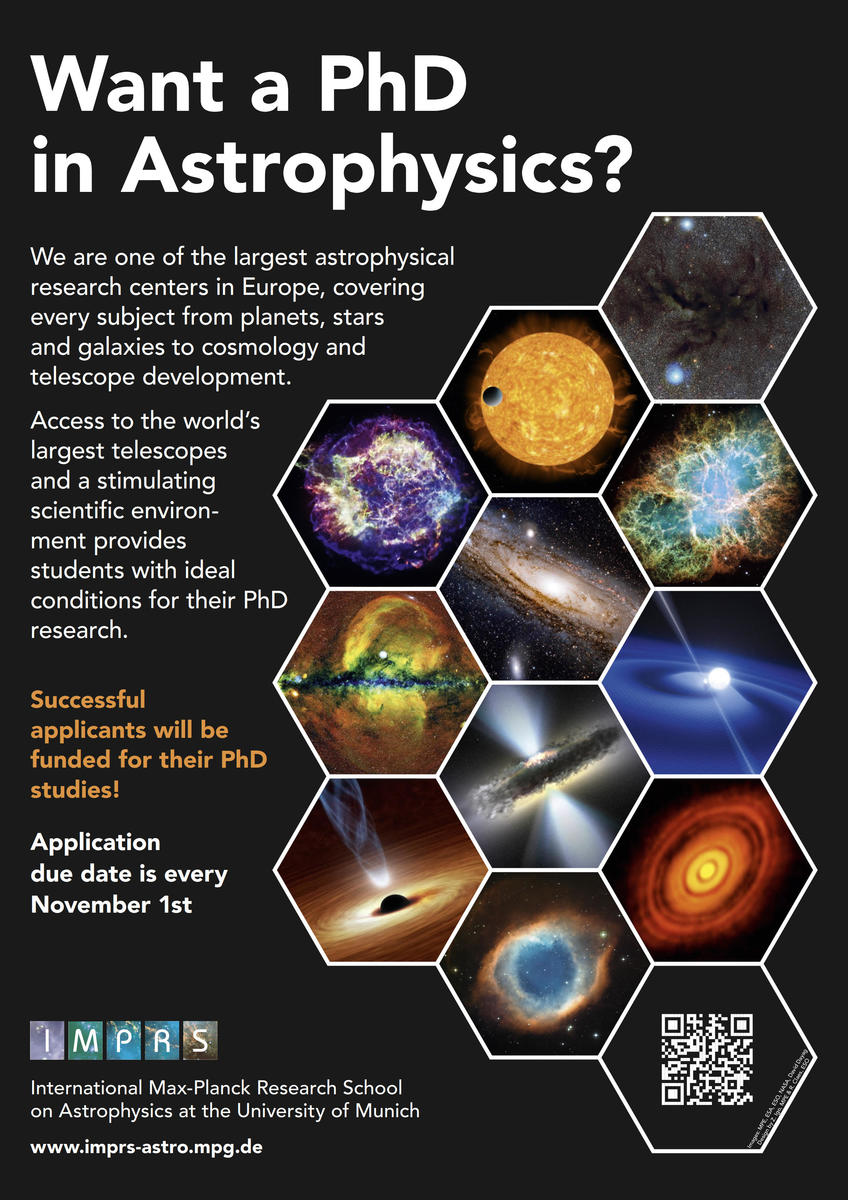You are here:
Advanced Course I
Observational Astrophysics - Part 1
Optical to Radio Wavelength Range
By Prof. Dr. Reinhard Genzel (MPE)
Lecture 1. Radiation
introduction of key terms, effects of the Earth's atmosphere, basic methods to detect radiation, fundamental limits of detection, a breeze through modern detectorsLecture 2. Telescopes
geometric and wave optics, interference and diffraction, radio antennae, optical/IR telescopesLecture 3. Spectroscopy and more
heterodyne spectroscopy: correlators and all, gratings, Fabry-Perots, Fourier Transform spectroscopy, energy resolving detectors, making a real measurementLecture 4. High Resolution Imaging
beating the atmosphere: adaptive optics, radio interferometry, optical/IR interferometryObservational Astrophysics - Part 2
Extreme UV to Gamma Ray Range
By Priv. Doz. Dr. R. Diehl (MPE)
Lecture 1. Astrophysical Themes at High Energies
Astronomical information and observational methods across the different bands of the electromagnetic spectrum, specific emission processes at high energies of UV and beyond; thermal emission, atomic and nuclear line emitters and absorbers, non-thermal emissionLecture 2. High-Energy Astronomical Instrumentation
Interactions of photons with matter; grazing-incidence mirrors, photon event collectors, multiple-interaction detection and tracking devices, electromagnetic shower detection, cosmic-ray instrumentationLecture 3. Sources of the High-Energy Sky
Stellar evolution and typical radiation signatures, late stellar phases, explosions and compact remnants, radiation processes in the interstellar mediumLecture 4. Lessons from High-Energy Astronomy
Mechanisms of supernovae and other explosions, the nature of compact stars, how stars determine the chemical evolution of galaxies and the universe; usage of literature databases, catalogues, and tool providers.Accretion, Jets and GRBs
By Dr. Henk Spruit (MPA)
Lecture 1: Accretion
Accretion general: virial temperature, radiative cooling, Eddington limits.Accretion disks: angular momentum, viscous spreading, mass-transfer, binaries, disk hydrodynamics.
Lecture 2: Accretion
Accretion disks: thin disk properties, viscosity, unsteady disks, accretion shocks, stream impact, radiatively inefficient disks.Lecture 3: Jets: phenomenology.
Jets: relativistic kinematics, precession, internal shocks, Magnetic outflow model: observational indications, centrifugal acceleration, regimes in the outflow, efficiencies.Magnetohydrodynamics: key concepts. Magnetic acceleration model: mathematical derivation, equivalence of the centrifugal, magnetic pressure and Poynting flux views.
Lecture 4: Jets
Jets: Launching problem, collimation, internal instabilities, poloidal collimation.Lecture 5: GRB:
history, phenomenology, time scale problem, time scale argument, compactness, fireballs, relativistic kinematics, size of photosphere in SR, photospheric radiation, afterglow, internal shocks.Central engines: merger model, msec magnetar model, collapsar, magnetically powered GRBs, X-ray flashes.





